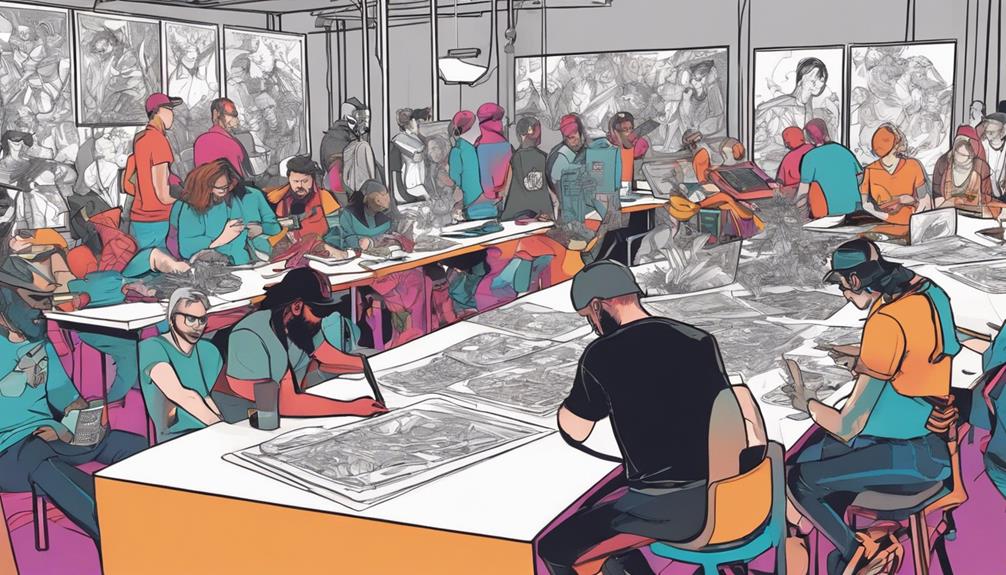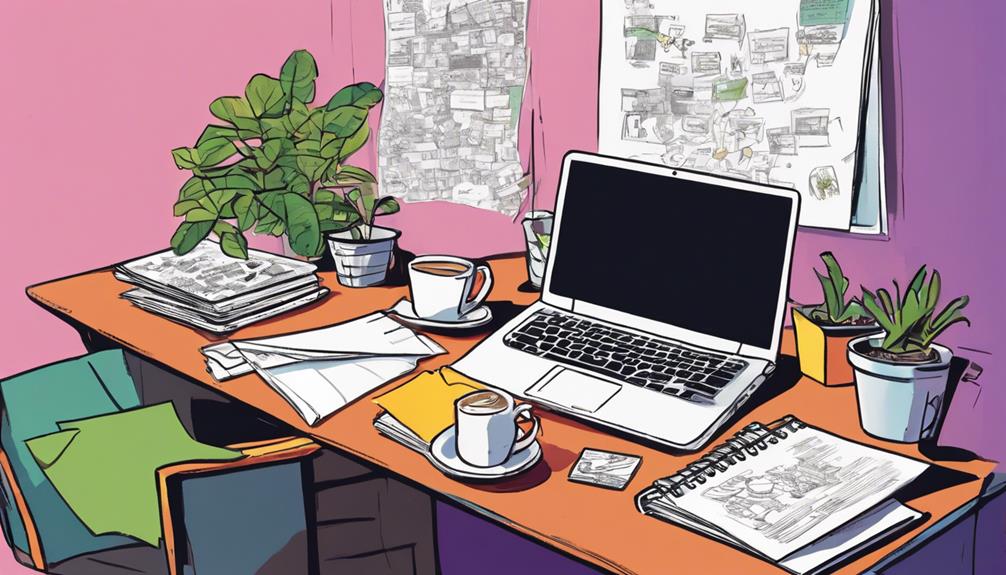You can easily transform your original concepts into physical prototypes using basic techniques and necessary tools. Begin by using everyday household items for initial experimentation; it is a practical way to test out your idea. Products like Shapelock provide versatility, allowing you to create prototypes that can be used multiple times. If you require additional expertise, consider teaming up with professionals in prototype development to improve your project. Strike a balance between cost and quality by selecting cost-effective materials that meet your standards. Embrace creativity and learn from each version of your prototype. By following these strategies, you will be well-prepared to bring your ideas to fruition, with further valuable insights awaiting you in the future.
Key Takeaways
- Start by creating handmade prototypes using household items for initial experimentation and idea visualization.
- Utilize flexible materials like Shapelock to develop reusable prototypes that can be easily modified.
- Collaborate with prototype developers and engineers to leverage their expertise in refining your designs.
- Explore cost-effective materials that meet your project's design criteria while balancing quality and budget.
Understanding Prototyping Essentials
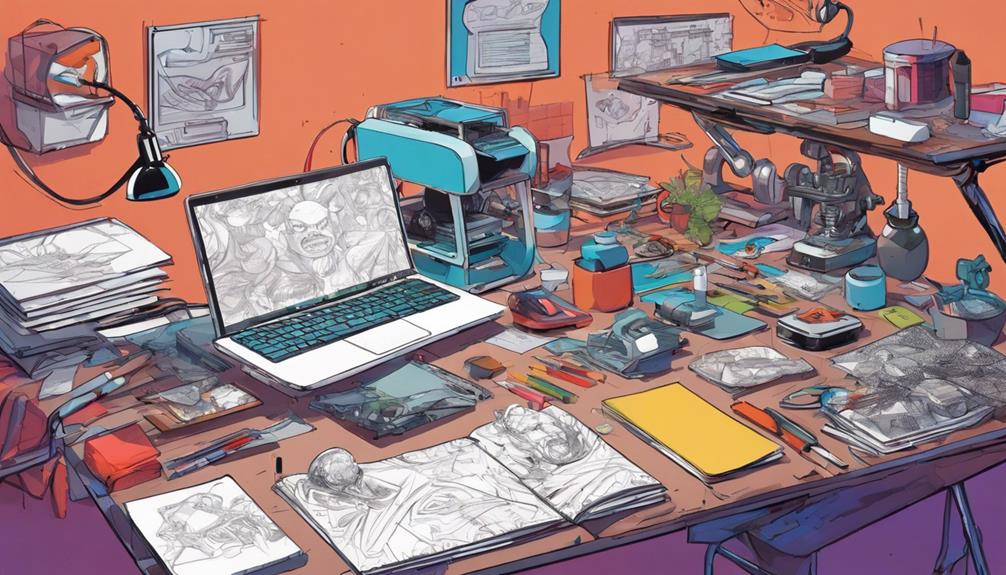
Understanding the essentials of prototyping is vital for turning your innovative ideas into tangible products that can be tested and refined. Prototyping allows you to create three-dimensional representations of your concepts, helping you assess functionality early on.
You can start with simple, handmade prototypes using household items, which encourages experimentation with different materials. This process not only helps you evaluate performance but also enhances communication with your team and stakeholders.
Additionally, tools like Shapelock offer flexible options for reusable prototypes. By engaging in hands-on creation, you'll shift from theory to practice, fostering creative thinking and exploring various possibilities.
Embrace the prototyping journey to discover better alternatives and refine your ideas effectively.
Engaging Expert Help
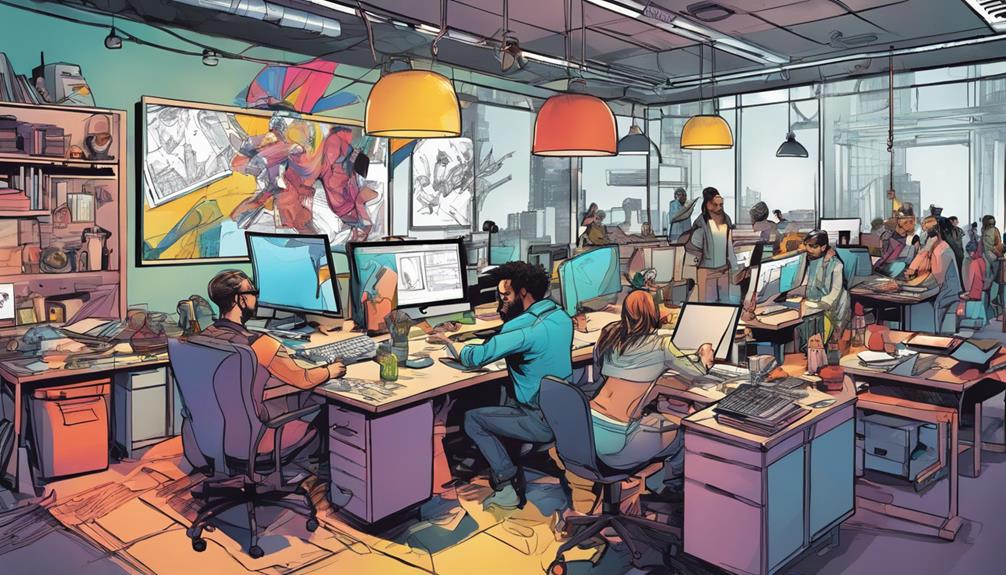
Engaging expert help can greatly enhance your prototyping process, ensuring your ideas are realized with precision and expertise.
When you collaborate with prototype developers, engineers, or local craftsmen, you tap into a wealth of knowledge that can elevate your project. Utilize resources like ThomasNet to find skilled professionals who fit your budget.
While DIY approaches can be tempting, consider the long-term benefits of professional services, such as rapid prototyping technologies. These experts can offer insights that save you time and money while improving your design.
Don't hesitate to ask for advice or feedback, as their experience can guide you in making informed choices. Your vision deserves the best support to thrive, so invest wisely in expert assistance.
Balancing Cost and Quality
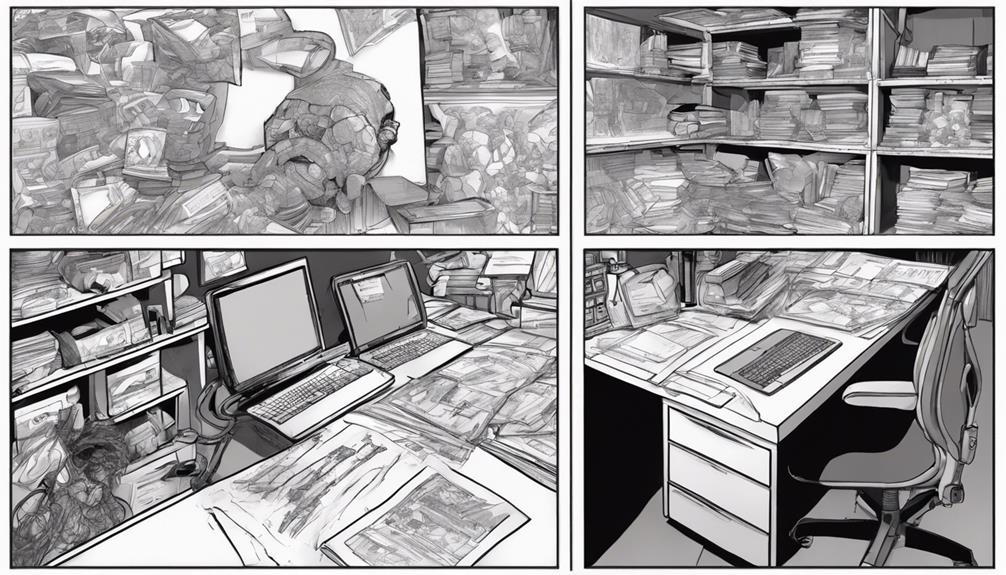
Balancing cost and quality in prototyping requires careful consideration of materials and services to guarantee you achieve the best results within your budget.
First, assess your project's specific needs and identify which areas can tolerate lower quality without compromising functionality.
Explore various materials, opting for cost-effective options that still meet your design criteria.
If you choose to hire professionals, compare their rates and expertise to find a balance between affordability and quality.
Don't overlook DIY methods as they can provide significant savings while allowing for creative freedom.
Fostering Creative Exploration
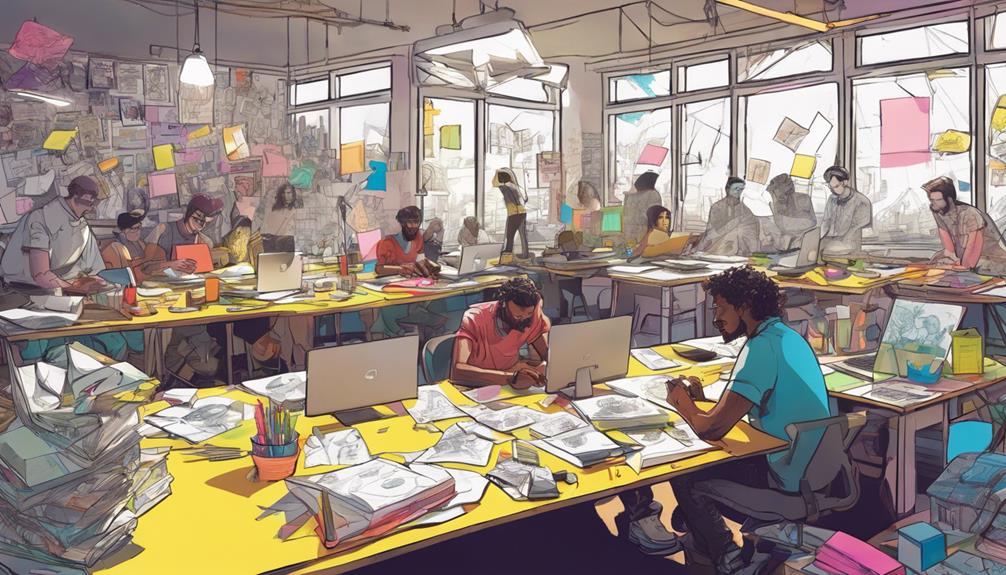
Creative exploration in prototyping opens up new possibilities, allowing you to push boundaries and discover innovative solutions that enhance your design process. Embracing creativity can lead you to unexpected outcomes and improvements.
Here are three ways to foster this exploration:
- Experiment with Materials: Use various materials to see how they affect your design's functionality and aesthetics. Don't shy away from unconventional options.
- Ask 'What if?': Challenge your assumptions by posing questions that encourage deeper thinking and alternative approaches. This mindset can lead to breakthroughs.
- Iterate Fearlessly: Create multiple prototypes and embrace failure as part of the learning process. Each iteration brings you closer to a more refined and successful design.
Learning From Success Stories
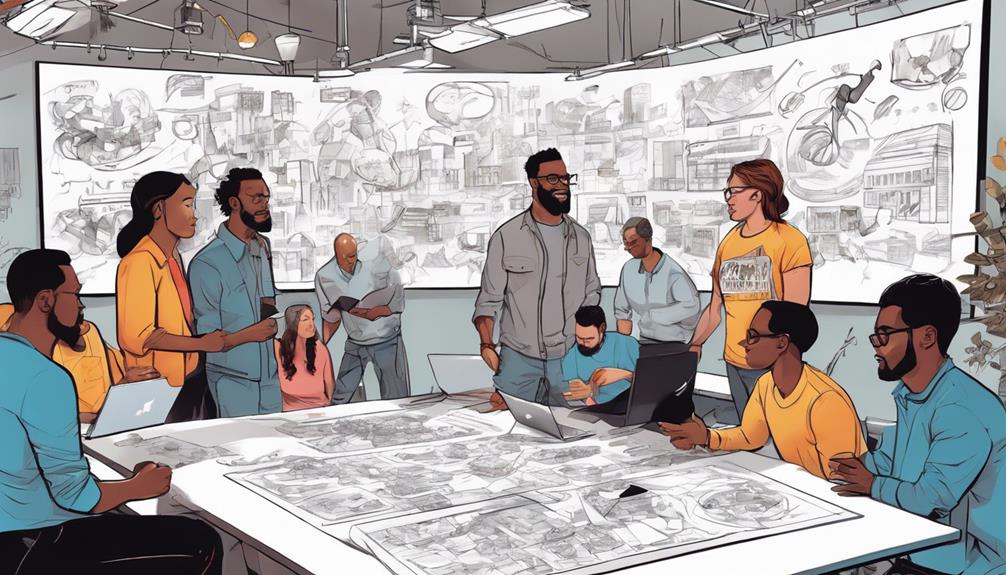
Learning from success stories can inspire you to navigate your own entrepreneurial journey with confidence and innovation. By examining how others have overcome challenges and achieved their goals, you gain valuable insights into effective strategies and creative solutions.
Take Maria Washington, for instance; she turned her son's academic struggles into a thriving business that helps others succeed. Her story shows the power of tailored approaches and adaptability.
Look for trends in various industries, as these can spark ideas for your own projects. Remember, each success story highlights the importance of resilience and learning from mistakes.
Use these narratives as a roadmap, and don't hesitate to adapt their lessons to fit your unique path. Your journey starts with inspiration!
Young Entrepreneurs in Focus
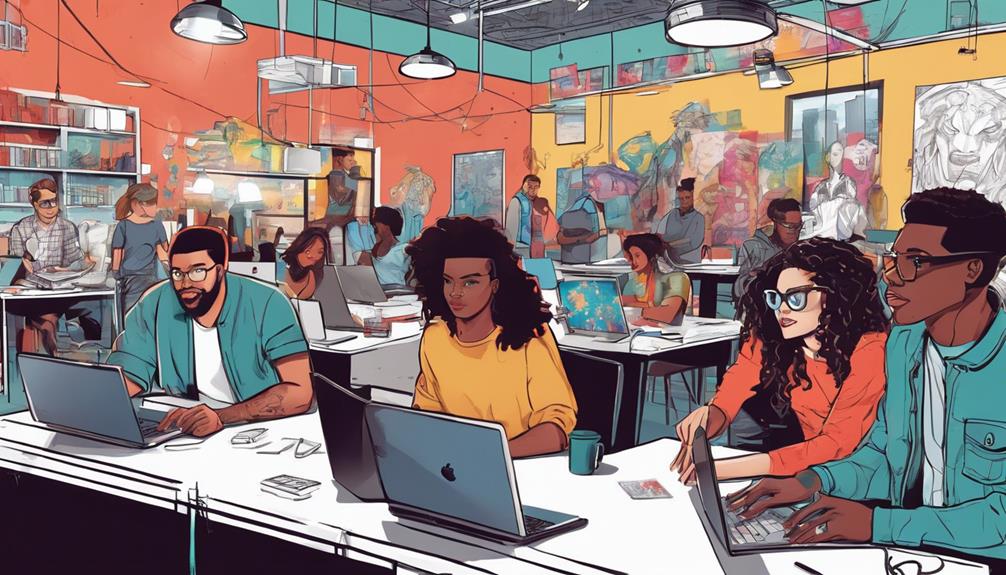
Young entrepreneurs are reshaping industries and driving innovation, proving that age is no barrier to success. Their fresh perspectives and fearless approaches are leading to remarkable achievements.
If you want to join this movement, consider these key points:
- Adaptability: Embrace change and be ready to pivot your ideas based on market feedback.
- Networking: Build connections with mentors and other entrepreneurs to share insights and resources.
- Learning: Stay curious and continually seek knowledge, whether through formal education or self-study.
Navigating the Tech Job Market
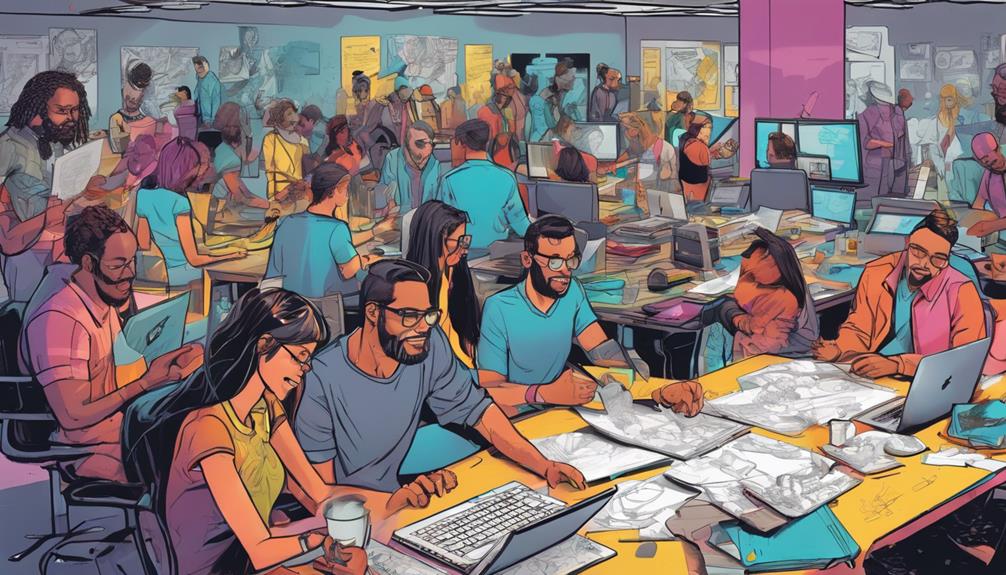
Maneuvering the tech job market requires a strategic approach to stand out among a competitive pool of candidates. Start by honing your skills relevant to in-demand technologies; keep your resume concise and tailored for each application.
Networking is essential—attend industry events, engage on platforms like LinkedIn, and connect with professionals in your field. Don't hesitate to seek mentorship or expert advice to refine your job search tactics.
Research companies thoroughly to understand their culture and values, which can help during interviews. Finally, prepare for interviews by practicing common questions and showcasing your problem-solving abilities.
Frequently Asked Questions
What Are the Key Materials Needed for Basic Prototyping?
For basic prototyping, you'll need materials like cardboard, foam, tape, scissors, and markers. These items allow you to create quick models, visualize ideas, and iterate designs effectively without significant investment or specialized tools.
How Long Does the Prototyping Process Typically Take?
The prototyping process typically takes a few days to several weeks, depending on complexity. You'll find that initial prototypes can be quick to create, while refined versions require more time for testing and adjustments.
Can I Prototype Without Any Technical Skills?
Yes, you can prototype without technical skills! Start with simple materials around your home to create rough models. Experimenting and iterating your ideas is what matters most, so don't hesitate to get hands-on!
What Common Mistakes Should I Avoid in Prototyping?
Prototyping's a delicate dance, and missteps can lead to disaster. Avoid rushing, neglecting feedback, or using unsuitable materials. Embrace iteration, listen to critiques, and explore various methods to refine your designs effectively.
How Do I Gather Feedback on My Prototype Effectively?
To gather feedback on your prototype effectively, share it with diverse users, ask specific questions, and encourage honest critiques. Document their insights and be open to suggestions, helping you enhance your design and functionality.
How Can Prototyping Help in Creating Profitable Products?
Prototyping is crucial to unlock profitable product path. By creating prototypes, companies can test product ideas, gather feedback, and make necessary adjustments before full production. This helps in identifying potential issues early on, saving time and resources, and ultimately leading to the creation of profitable products.
Conclusion
As you commence your prototyping journey, remember that even the greatest innovators, like Thomas Edison, faced countless failures before achieving success.
Embrace the process, learn from each iteration, and let your creativity flourish.
By transforming your ideas into tangible prototypes, you're not just building products; you're crafting your future.
So, take that leap of faith, ask “What if?” and watch as your visions come to life, paving the way for remarkable opportunities ahead.
